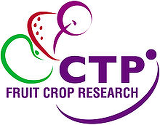october 2021 – september 2025
Haidee Tang

Seasonal changes have a large impact on perennial trees. In summer, the trees are thick with green leaves and in autumn, these leaves turn orange as chlorophyll is degraded and the leaves are left with red pigmented compounds. Following autumn, the trees lose their leaves and go through a period of dormancy in winter before they blossom in spring and regrow their leaves. Winter and spring have a particular significance to fruit as chilling during winter signals flowering buds to sleep and warmer temperatures help them come out of dormancy.
As climate change is causing warmer winters, we are left to wonder if the amount of chill received during winter months is sufficient for flowering. My first objective is to use historical climatic data to determine flowering time in apple trees and to model chilling requirements of these trees. Moreover, we can estimate the start of fruit set to predict fruit ripeness for harvest.
Fruit ripeness at harvest is important as the maturity of the fruit have lots of downstream implications for storage. Immature fruit lead to small acidic fruit whereas over-mature fruit soften too quickly. There is a window between these two stages which lead to the best possible storage which is why I aim to use imaging data to determine fruit ripeness.
Overall, I hope to get a greater understanding of fruit development starting from the budding and flowering stage, up until fruit harvest.
Research progress
Haidee Tang AHDB Annual Report 2022
